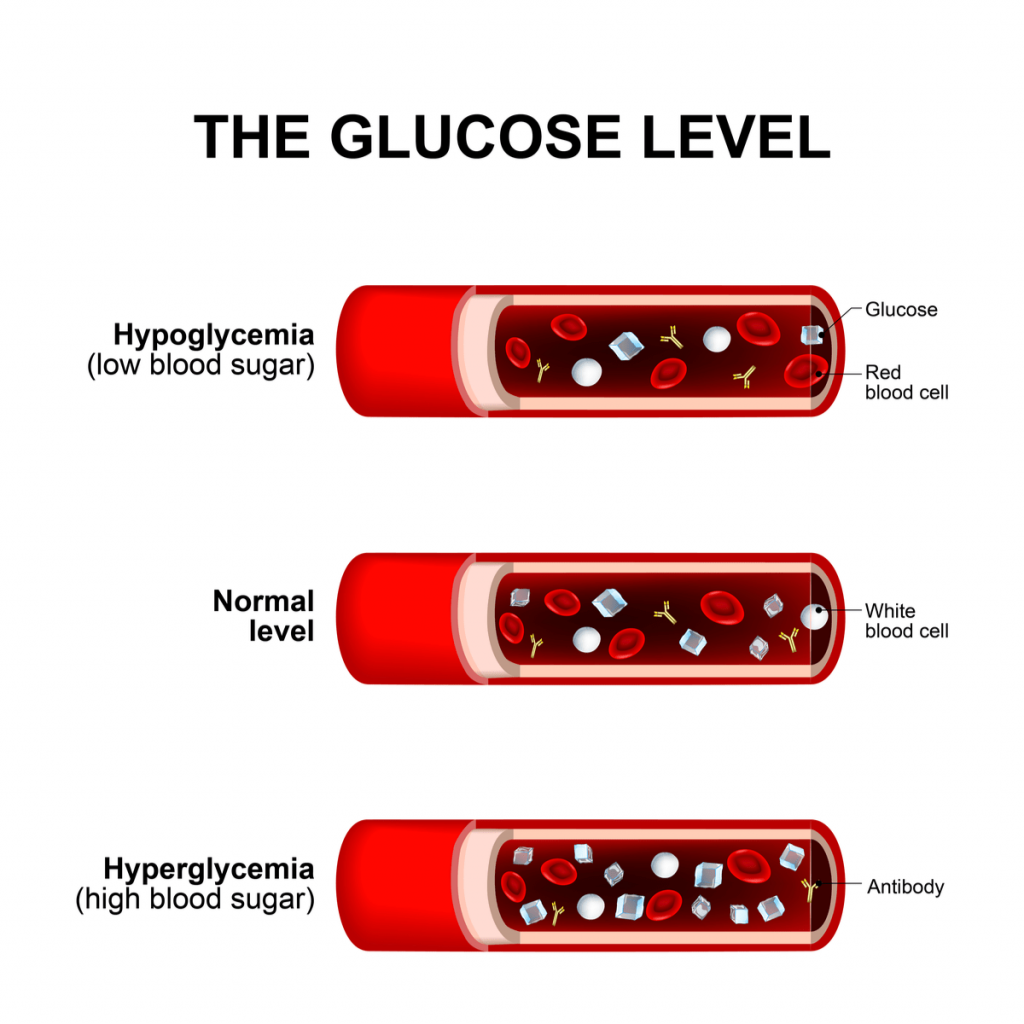In general, a blood sugar reading of more than 180 mg/dL or any reading above your target range is too high. A blood sugar reading of 300 mg/dL or more can be dangerous. If you have 2 readings in a row of 300 or more, you should call your Doctor or start medications.
But does not weight to blood sugar level become worst. If you found Sugar level high, at that time only start to have some precautions for Diabetes. In market you can browse so many medications are available for Diabetes Buy Glucofort.
What Is High Blood Sugar Level?
High blood sugar level is a condition when the blood sugar levels are abnormally high. The level can be caused by many things, like eating foods that contain sugar, not eating enough food, or being sick.
When the blood sugar levels are high, it can cause problems like: feeling tired, being thirsty all the time, having trouble concentrating, and having mood swings.
What Is Low Blood Sugar Level?
Low blood sugar level is a condition in which the level of sugar in the blood is too low. It can be caused by eating foods that are high in sugar, not drinking enough fluids, or having diabetes. When blood sugar levels are too low, the body has to resort to using stored energy (glycogen) to continue functioning.
This can cause many problems, such as feeling tired, dizziness, weakness, light-headedness, shakiness, having headaches and confusion. If left untreated, low blood sugar level can lead to coma or even death.
What is A Normal Blood Sugar Level?
A normal fasting blood sugar (in the morning when you haven’t had anything to eat or drink except water for 8 hours) is less than 100 mg/dL.
A fasting blood sugar reading of 100-125 mg/dL indicates prediabetes, and a reading above 125 indicates diabetes.
Fasting Blood Sugar Level and Result
- Less than 100 mg/dl – Normal
- 100 mg/dl to 125 mg/dl – Prediabetes
- 126 mg/dl or higher – Diabetes
If you test your blood sugar two hours after eating or drinking something containing sugar instead (an oral glucose tolerance test), the numbers to look for are:
Oral Glucose Tolerance Test and Result
- Less than 140 mg/dl – Normal
- 140 mg/dl to 199 mg/dl – Prediabetes
- 200 mg/dl or higher – Diabetes
What is Considered Low Blood Sugar?
For the average person with diabetes, low blood sugar means anything under 80 mg/dL (for pregnant women, who need to have tighter control, low blood sugars are anything under 60 mg/dL).
Very low blood sugars are any readings under 40 mg/dL. Anything under 40 mg/dL is considered extremely dangerous and potentially fatal.
A person is at a significantly higher risk of falling into a diabetic coma if they cannot get their blood sugar above 40 mg/dL for several hours.
If a person is experiencing a severe low, and they are unable to chew food or swallow liquids, they will require an emergency shot of Glucagon (typically in the thigh muscle or buttocks).
What is Considered High Blood Sugar?
Blood sugar levels are considered high in people with diabetes once they’re more than the recommended 120 mg/dL, however, having a blood sugar of 145 mg/dL usually won’t cause any problems (especially if you’re going to sleep or planning to exercise).
For most people, high blood sugars become symptomatic once the blood sugar level reaches between 180-200 mg/dL.
Blood sugars above 200 mg/dL need to be treated immediately with insulin (and water and exercise are helpful, too), and any blood sugar over 250 mg/dL requires that you do a urine test for ketones, to make sure you’re not spiralling into diabetic ketoacidosis (DKA).
This is when the body’s blood turns acidic due to prolonged, dangerously high blood sugar levels and Ketones in the blood. This can be fatal if not treated immediately.
This can occur when one is sick or battling an infection, due to a pump infusion site failure or even if you forgot to take your insulin for a few days.
Unfortunately, about 25% of newly diagnosed people with type 1 diabetes are diagnosed when they are already in DKA.
If you are experiencing a blood sugar higher than 250 mg/dL along with moderate to high ketones for several hours and cannot get your blood sugar down, contact your doctor immediately and seek emergency medical attention.
People with diabetes are at heightened risk of falling into a diabetic coma from high blood sugar once their blood sugar levels reach 600 mg/dL or higher.
At this point, your blood turns thick and syrupy and excess sugar passes from your blood into your urine, which triggers a filtering process that draws large amounts of fluid from your body (called “diabetic hyperosmolar syndrome”).
